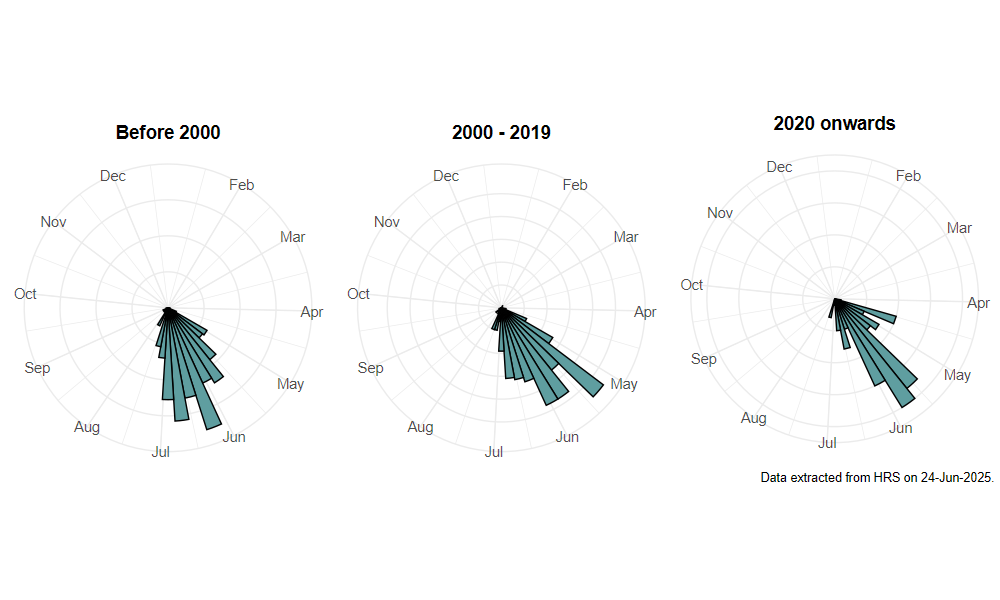Chrysogaster virescens Loew, 1854
Identification
Identification difficulty = 3. ![]()
![]() according to Ball & Morris, 20241
according to Ball & Morris, 20241
Biology
The larvae of this genus are aquatic, but the larva of this species remains unknown. Associated with boggy, acidic locations with carr, wooded stream-sides or damp scrub. Adults are frequently found at flowers, including those of Rowan Sarothamnus scoparius, white umbels Meadowsweet Filipendula ulmaria and buttercups Ranunculus sp.
Flight period
The following plots show the number of unique records per week excluding those reported to be of immature stages.

Distribution
Although widely distributed, this species appears to occur mainly in the north and west, and is locally frequent in the Scottish Highlands. In the south-east it seems to be confined to acid heathland locations.

Trends
The following plots show the Frescalo TFactor vs year and a map of the rescaled frequency (all records) for the species.
-
Ball, S., & Morris, R. (2024). Hoverflies of Britain and Ireland. WILDGuides (3rd ed.). Oxford: Princeton University Press. ↩